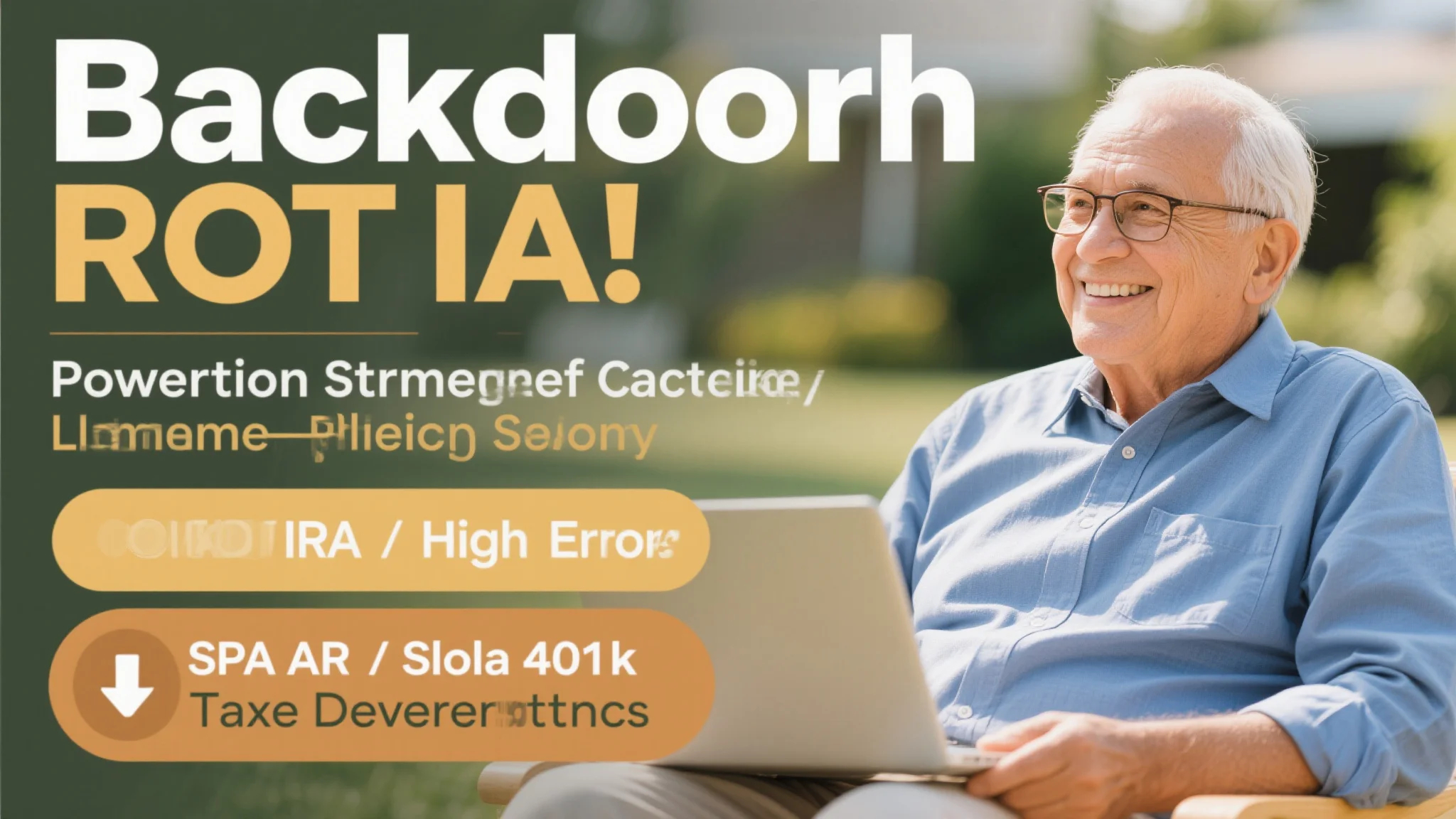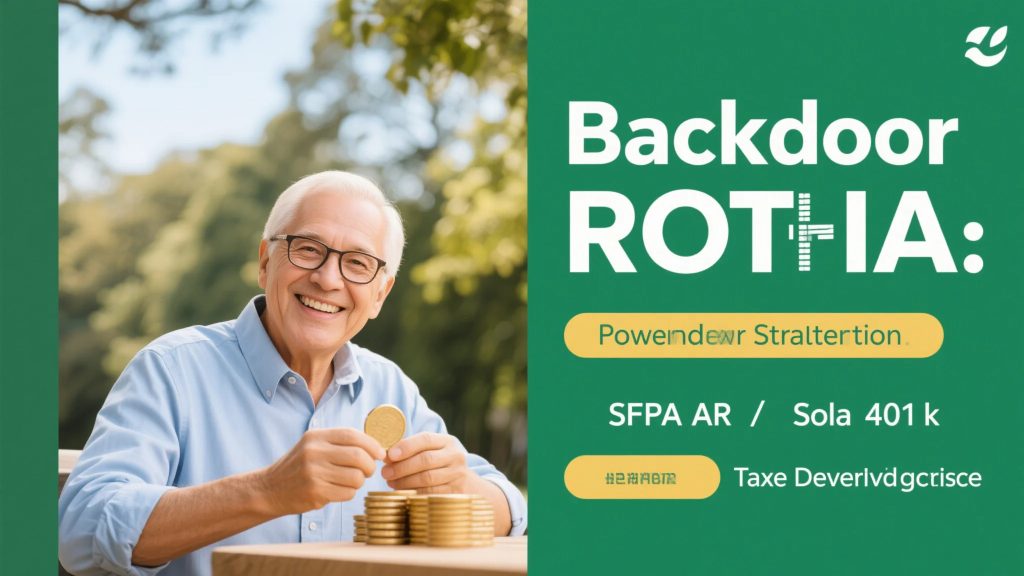
Backdoor Roth IRA: A Powerful Strategy for High-Income Savers
Mastering the Backdoor Roth IRA Technique
The backdoor Roth IRA has become an essential strategy for high-income earners excluded from direct Roth contributions. This sophisticated maneuver involves making nondeductible traditional IRA contributions followed by a conversion to a Roth IRA. When executed properly, it creates a powerful vehicle for tax-free growth regardless of income limitations.
Implementing a backdoor Roth IRA requires careful attention to IRS rules, particularly the pro-rata calculation that considers all your traditional IRA balances. Many financial advisors recommend “cleaning out” pre-tax IRA funds by rolling them into employer-sponsored plans before executing the backdoor strategy. This prevents unexpected tax consequences that could diminish the benefits.
Strategic Roth IRA Conversion Planning
Roth IRA conversion strategies complement the backdoor approach by providing additional opportunities to shift funds into tax-free accounts. High earners often implement multi-year conversion plans that stay within specific tax brackets, carefully managing the taxable income generated by each conversion. Market downturns can present particularly advantageous times for conversions.
Effective Roth IRA conversion planning considers both current and projected future tax rates. Many experts suggest accelerating conversions during lower-income years or before anticipated tax increases. The flexibility to withdraw contributions (not earnings) tax-free at any time makes Roth accounts particularly valuable for financial planning.
Retirement Planning for High Earners
Comprehensive retirement planning for high earners extends beyond basic savings strategies to include sophisticated tax optimization techniques. High-income individuals face unique challenges like contribution phase-outs and backdoor strategies become crucial tools. A holistic approach coordinates 401(k) plans, IRAs, taxable accounts, and sometimes deferred compensation arrangements.
The foundation of retirement planning for high earners involves maximizing all available tax-advantaged accounts while implementing supplemental strategies for excess savings. This often includes after-tax 401(k) contributions that can be converted to Roth status, sometimes called the “mega backdoor” Roth strategy. Regular reviews ensure these approaches adapt to changing tax laws and personal circumstances.
SEP IRA vs Solo 401k Considerations
The SEP IRA vs Solo 401k decision is particularly important for self-employed high earners. While SEP IRAs offer simplicity and high contribution limits, Solo 401ks provide additional features like Roth options and loan provisions. The Solo 401k’s ability to accept after-tax contributions (up to $69,000 in 2024) makes it especially powerful when combined with Roth conversion strategies.
Comparing SEP IRA vs Solo 401k features helps business owners choose the optimal structure for their situation. Those anticipating backdoor Roth strategies may prefer Solo 401ks because they avoid complicating the pro-rata rule with SEP IRA balances. The decision ultimately depends on factors like income level, desire for Roth options, and need for flexibility.

Exploring Tax Deferred Retirement Options
High earners should fully leverage tax deferred retirement options before implementing Roth strategies. Traditional 401(k) plans, 403(b)s, and similar accounts provide immediate tax deductions that can be particularly valuable in peak earning years. These accounts form the foundation of retirement savings before layering in Roth conversions.
The most effective tax deferred retirement options consider both current tax savings and future distribution strategies. Some savers intentionally “front-load” traditional contributions during high-income years, then gradually convert to Roth accounts during lower-income periods. This balanced approach optimizes lifetime tax efficiency rather than focusing solely on current-year savings.
Integrating Strategies for Maximum Benefit
The most successful plans combine backdoor Roth IRA techniques with strategic Roth IRA conversion planning. They incorporate comprehensive retirement planning for high earners principles while evaluating SEP IRA vs Solo 401k options for business owners. All these strategies build upon a foundation of maximizing tax deferred retirement options.
This integrated approach creates multiple layers of tax diversification, ensuring flexibility regardless of future tax law changes. Regular reviews with financial and tax professionals help maintain optimal coordination between all components as laws, markets, and personal situations evolve.
Avoiding Common High Earner Mistakes
Even with substantial resources, high earners frequently make retirement planning errors. These include neglecting to implement backdoor Roth IRA strategies, underestimating the impact of the pro-rata rule, or failing to properly coordinate Roth IRA conversion timing. Others overlook valuable tax deferred retirement options or don’t properly evaluate SEP IRA vs Solo 401k alternatives.
The complexity of retirement planning for high earners makes professional guidance particularly valuable. A qualified financial advisor can help navigate the intricate rules while optimizing strategies for both current tax savings and long-term financial security.


